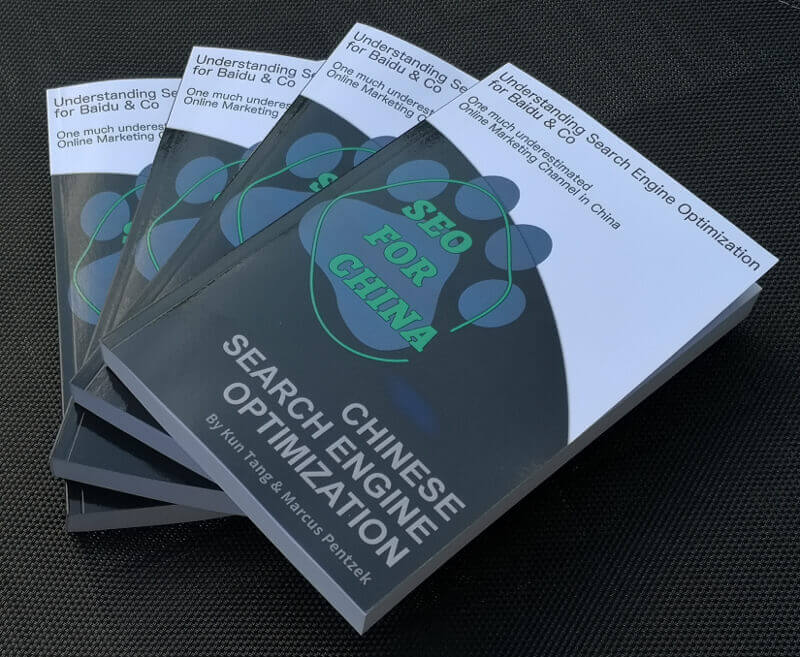
Spoiler: Currently there is no supplier of reliable data of Search Engine Market Shares in China. Our all time favourite gs.statcounter.com is just soooooo wrong these days. In this article we are explaining what we observed and why statcounter can not be right.
If you’re looking to dive into SEO for the Chinese market, you’ll first need to understand the search engines that dominate the scene. It might be tempting to rely on a quick Google search with the search query “search engine market share” and as a result turning to gs.statcounter.com. That’s what I often did as well, when preparing a new workshop on SEO for China.
Let’s have a look:
Market Share of Search Engines in China (Statcounter)

As we examine the chart provided by gs.statcounter, showcasing the market share of search engines across both desktop and mobile devices between January 2021 to April 2023, a striking trend emerges. Baidu continues to reign supreme with a dominant market share ranging from 70-90% until May 2022, before experiencing a significant drop in the following months, plummeting to under 40% by April 2023.
This fluctuation is indicative of a dynamic and exciting search engine market that is experiencing notable changes.
Let’s have closer look how the market share looks separately in Desktop and Mobile:
Desktop Market Share of Search Engines in China (Statcounter)

The desktop market share in China’s search engine landscape presents an intriguing picture. While Baidu holds the dominant position with over 70% market share, the beginning of 2021 saw a shift with Sogou taking the lead with more than 50%, and Baidu following with 29%.
This was short-lived, and Baidu regained its number one spot in September 2021, with Sogou’s market share dropping to 10-20%. Meanwhile, Bing steadily rose week by week from the start of 2021.
By April 2021, Bing overtook Baidu, and it now holds a desktop market share of 37%, with Baidu trailing behind at a low 26%, and Sogou further down at 16%. This fluctuation underscores the fast-paced and competitive nature of China’s search engine market.
The mobile perspective could not get any more exciting, could it?
Mobile Market Share of Search Engines in China (Statcounter)

From May 2022, Baidu dominates the market share for mobile search engine in China with more than 90%. It’s time to keep an eye on the Russian search engine Yandex which gained 6% market share in August 2022, and has steadily grown ever since. In the recent three months (from February to April 2023), Yandex has gained a significant market share of 31%, currently closing in on Baidu’s leading position of 49%. Is this a sign of “China’s Google” coming to an end, with a new search engine giant taking over the market?
The shift in market share signals a dramatic change in China’s search engine landscape, with Yandex becoming a significant player in the game.
Does SimilarWeb support these findings?


If there is an increase in search engine usage, one would expect a comparable rise in visitors to the search engine’s domain; this may not be the case for Baidu as their search can also be accessed via the Baidu app. Assuming there is no such app for Yandex or Bing in China, we should observe increased traffic for both engines on SimilarWeb, right?
As it turns out, we do see a traffic increase for Yandex but a decrease for Bing from China. The decline for Bing may be due to users trying out the search engine, attracted by its GPTchat features, which are not available in China. However, the Yandex numbers from gs.statcounter appear to be supported by the SimilarWeb data. What could be the reason for these fluctuations in China’s search market share?
Are Bing and Yandex the new leaders in China?
While it may seem unlikely that Bing and Yandex have overtaken Baidu in China’s search engine market, our analysis of our clients’ past visitor statistics reveals a gradual increase in Bing’s market share in organic search traffic, averaging between 6 to 10% across desktop searches.
However, Yandex is not yet a significant factor in this landscape. We can confirm that Baidu continues to be the main driver of organic search traffic among our clients. Nonetheless, our perspective only accounts for a fraction of the market.
To gain a more comprehensive understanding, we turned to other online marketers specializing in China SEO and asked for their insights on LinkedIn. Here’s what some other China SEO experts had to say:


Sarah Presch and Adam di Frisco, two seasoned SEO professionals catering to clients in the Chinese search market, are baffled by Yandex’s sudden rise in search engine popularity.
Our own client data shows no noticeable movement, with Baidu continuing to reign supreme as the dominant driver of organic search traffic to their websites, and less than 10% of traffic coming from Bing in China.
But with both gs.statcounter and SimilarWeb reporting otherwise, one can’t help but wonder – are they both indulging in some kind of collective hallucination? Or is there something more complex and subtle at play in China’s mercurial search engine landscape?

But why do experienced SEO consultants like Natalia not trust Statcounter (search engine) market share data? What is the reason? To answer this question, we need to understand where this data is coming from first:
Clickstream data – Where does it come from?
Statcounter as well as SimilarWeb (and Semrush, which doesn’t display data specifically for China – probably because they know it is not good enough) are using so called “Clickstream data” to get the insights they are showing us.
Statcounter’s Clickstream Data
Statcounter is a free website analytics app comparable to Google Analytics. Website owners install a small Javascript code on their websites and this gathers information like “which country is the user from”, “”which browser is the user using”, “which operating system” and if the user comes from organic search towards the website – “which was the search engine driving the traffic”.
Here is how to set up the free tool:

Statcounter than collects all these information on the website visitors anonymously and provides it for free to everyone.
Implementing Statcounter may seem like a brilliant plan- assuming it is widely adopted among websites in China.
However, Statcounter is a Western tool, and despite offering a free version like Google Analytics, the vast majority of Chinese webmasters prefer to use native solutions, which are also free of charge.
Among these, Baidu Analytics (Baidu Tongji) is the most prominent. It’s widely believed that the data collected and stored by Baidu, on servers within China, are far more dependable than foreign counterparts.
The question lingers: who then uses Statcounter? More often than not, websites not owned by Chinese companies, and often not even hosted in China.
Surprisingly, Statcounter does count the users from China, owing to a popular misconception; Chinese users can indeed visit websites that aren’t hosted in China and are identified as such due to their Chinese IP addresses.
Conclusion: Statcounter is most likely counting more traffic of Chinese people visiting foreign websites, using Yandex and other platforms, rather than showing the image of the “average Chinese” internet user.
Geographical Distribution of Statcounter(‘s Clickstream data)
On their website statcounter is very transparent, so we can easily see here that the percentage of page views tracked in China with it’s 1 Billion internet users and 700 Million Baidu users is lower than the number of page views performed by people from the United Kingdom with 63 Million internet users.
This probably sheds an additional side spot light on how “average” the data is for the Chinese market.
SimilarWeb Clickstream Data
The recent data from SimilarWeb at least supports the significant growth of traffic to Yandex.com among Chinese users. But here’s where things get interesting: we need to examine how SimilarWeb is collecting their data and if they are sourcing from Statcounter. Could this be the missing link in understanding the unusual rise of Yandex in China’s search engine market?

Partnerships could potentially explain the connection between SimilarWeb and Statcounter. It’s possible that SimilarWeb’s partner data sources have picked up on a similar trend of Chinese users flocking to Yandex recently or that they are in direct partnership with Statcounter to obtain their data. Could it be that these partnerships are the missing piece of the puzzle in cracking the enigma of Yandex’s ascent in China’s search engine market?
The Problem with Search Engine Marketshare Data for China
Finding a dependable source for search engine market data in China has proven to be problematic. The clickstream data available seems to be corrupted and cannot be used to portray the “average Chinese user’s” behavior.
Simon Lesser, Co-Founder and CEO of Dragon Metrics, also arrived at this conclusion. The search engine market in China is notoriously challenging to decipher, and the scarcity of accurate and trustworthy data on China’s search engine market is hindering our ability to discern the changes taking place:



Despite Dragon Metrics being an international SEO tool with access to valuable search data for Mainland China, Dragon Metrics has yet to discover a reliable solution for China’s search engine market share data – a conundrum that frequently prompts people to reach out to them for support, given their reputation for excellence and reliability in the field. Clearly, obtaining credible and accurate data on China’s search engine landscape is a challenge that remains unsolved.
Search Engine Market Share Statistics for China
As you might have found this article searching for Search Engine Market Share Statistics for China on Google or Bing, we do not want to leave you completely frustrated. Let us share with you data from the Analytics Softwares of our clients operating in China.
Disclaimer: Not all of our clients did agree us using their data. But we think we got a good share of them so we can proudly say, this data is not influenced by only one industry. But all clients that agreed on us using their anonymized Baidu-Tongji and Google-Analytics data were from the B2B sector.

When it comes to our Chinese B2B clients, Desktop traffic frequently outweighs Mobile traffic to their websites. For instance, in our sample dataset from April 2023, over 70% of the traffic from search engines came from Desktop devices, while less than 30% came from Mobile. Clearly, desktop searches still hold a significant share of the Chinese search engine market, indicating that optimizing for desktop searches remains vital for businesses targeting this demographic.

The search engine hierarchy in China seems sorted, with Baidu leading the pack with over 90% share. Following closely are Bing with 4.63% and Google with 4.61%.
But hold on a second – isn’t Google blocked in China?
Yes and no. Despite the ban, many B2B professionals are using VPNs to gain access to websites necessary for their business, such as LinkedIn. Interestingly, these VPNs are often sourced locally and do not hide the user’s Chinese origin. Thus, users can access blocked search engines like Google and LinkedIn from behind the Great Firewall.
Jademond Talk on Search Engine Market Shares in China
More Information on SEO for China in our book:

Where can you buy this SEO book?
Here are the links to the different Amazon websites, where you can buy the book. If your country is not listed, go to your Amazon website and simply search for “SEO for China” and it will show up 😉
- USA: https://www.amazon.com/SEO-China-Chinese-Search-Optimization/dp/B0B5MK9SBV
- UK: https://www.amazon.co.uk/SEO-China-Chinese-Search-Optimization/dp/B0B5MK9SBV
- France: https://www.amazon.fr/SEO-China-Chinese-Search-Optimization/dp/B0B5MK9SBV
- Spain: https://www.amazon.es/SEO-China-Chinese-Search-Optimization/dp/B0B5MK9SBV
- Germany: https://www.amazon.de/SEO-China-Chinese-Search-Optimization/dp/B0B5MK9SBV
Some information on the book:
Authors: Kun Tang, Marcus Pentzek
ASIN: B0B5MK9SBV
Publisher: Independently published (July 10, 2022)
Language: English
Paperback: 282 pages
ISBN-13: 979-8840196434
